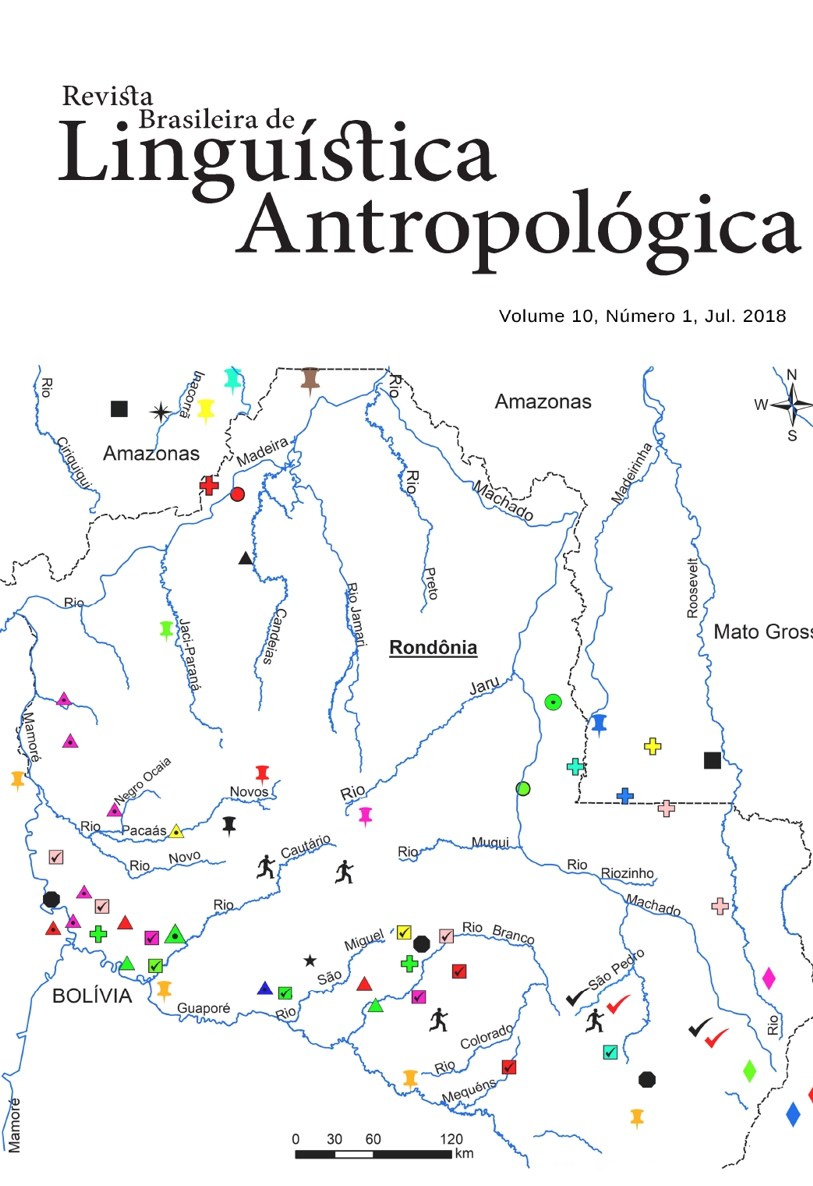Postpositions and oblique markers in Akuntsú (Tupí)
DOI:
https://doi.org/10.26512/rbla.v10i1.19052Keywords:
Akuntsú Language. Postpositions. Clitics. Obliques. Morpho-semanticsAbstract
The main goal of this article is to present a morphological and semantic analysis of the oblique markers and postpositions in Akuntsú (Tupían language), by providing the semantic varieties of these elements and their morphological classifications. In this regard, the typological features of this language are briefly described, focusing on the analyses of the nominal morphology. Thus, it is presented that the nominal grammatical information, in Akuntsú, is signaled by postpositions and oblique markers, which can be nouns, pronouns, demonstratives and, in some cases, adverbs and verbs.
Downloads
References
Aragon, Carolina C. A grammar of Akuntsú, a Tupían language. Tese de doutorado, Universidade do Hawai’i, Manoa, 2014.
Caspar F e Aryon D. Rodrigues. Versuch einer Grammatik der Tuparí-Sprache. ms, 1957.
Givón, T. Syntax: a functional-typological introduction, vol. 1. Amsterdam: John Benjamin’s, 2001.
Rodrigues, Aryon Dall‘Igna and Ana Suelly A., Cabral. Tupían. The Indigenous Languages of South America: A Comprehensive Guide. (The World of Linguistics, vol. 2.), 495-594, ed. by Lyle Campbell and Verónica Grondona. Berlin: Mouton de
Gruyter, 2012.
Downloads
Published
How to Cite
Issue
Section
License
Copyright (c) 2018 Revista Brasileira de Linguística Antropológica

This work is licensed under a Creative Commons Attribution 4.0 International License.
Authors who publish in RBLA agree to the following terms:
a) Authors maintain the copyright and grant the journal the right of first publication, and the work is simultaneously licensed under the Creative Commons Attribution License, which allows the sharing of the work with recognition of the authorship of the work and initial publication in this journal.
b) Authors are authorized to assume additional contracts separately, for non-exclusive distribution of the version of the work published in this journal (eg, publish in an institutional repository or as a book chapter), with recognition of authorship and initial publication in this journal.
c) Authors are allowed and encouraged to publish their work online (eg, in institutional repositories or on their personal page) at any point before or during the editorial process, as this can generate productive changes, as well as increase impact and citation of the published work.







